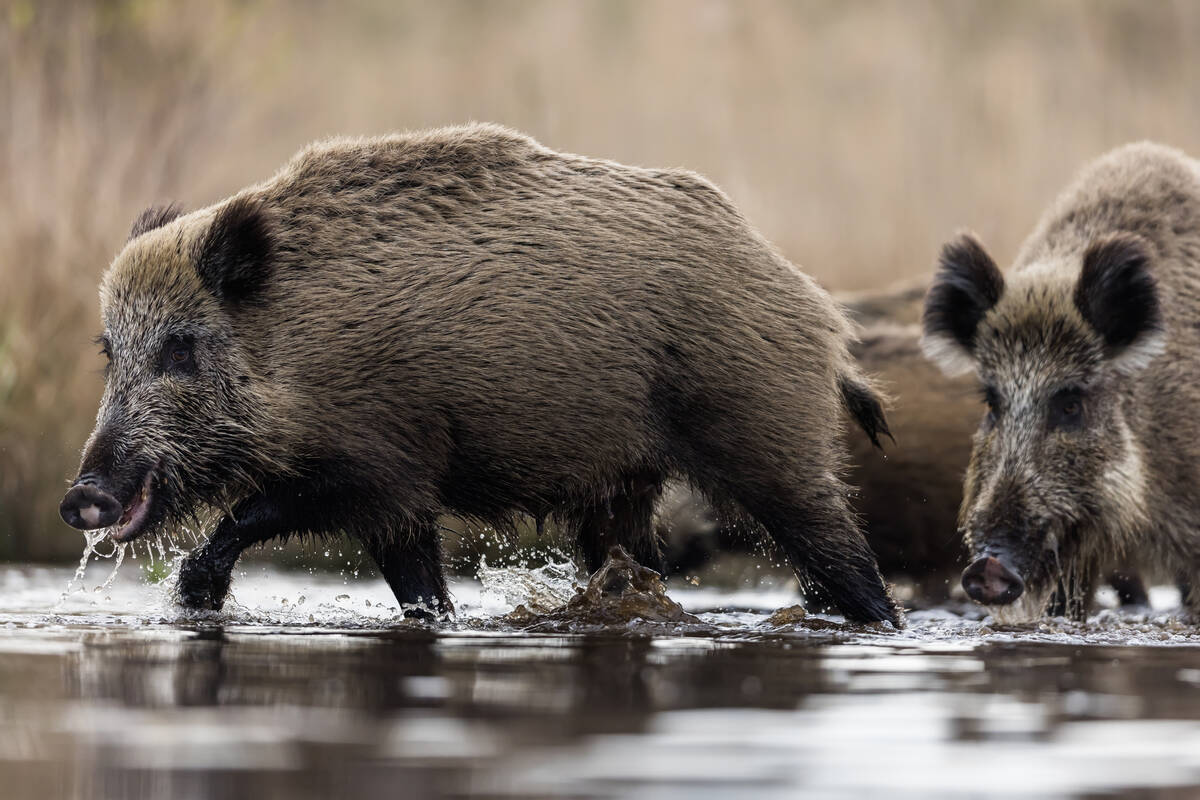Western Canadian farmers have for years heard the same message from agronomists and advisers: grow a diverse array of crops, the more the merrier.
David Sullivan takes a differentpoint of view. He says producers should specialize with three or four crops and drop the rest.
“I see way too many farms growing seven, eight or nine crops,” said Sullivan, vice-president of sales and marketing for Global Ag Risk Solutions, a private crop insurer based in Moose Jaw.
“If you were to go to the racetrack and bet on every single horse, you wouldn’t walk (away) with much money. You’ve got to pick the winners. Farming is no different.”
Read Also

Manitoba bans wild boar possession
Manitoba has tightened the regulatory status of Eurasian wild boar in an effort to help fight back against invasive wild pigs.
Sullivan, who spoke at the Crop Connect conference in Winnipeg Feb. 10, has analyzed the crop returns of Global Ag Risk Solution clients and determined that producers make most of their money from two or three crops.
A rotation of two crops isn’t sustainable, but growing six, seven or eight crops isn’t wise either, Sullivan said.
“Probably three to four crops are a good balance between agronomy and economics,” he said.
“When you grow more than that, you’re probably not gaining much from an agronomic standpoint…. But, economically, you could be leaving a lot of money on the table growing that fifth, sixth or seventh crop that aren’t making as much money (as primary crops).”
Sullivan said the trouble with six, seven or eight crops is that it adds too much complexity to the operation. It’s hard enough making the right choices for three crops, let alone six or seven.
“When to seed, what seeding rate, what fertility, what am I spraying … where am I binning it, where am I selling it?… You (can) spread your mind space too thin,” he said.
“You only have so many decisions you can make in a year before things start to be (questionable) decisions.”
Dumping crops isn’t hard to do. Sullivan gave the example of a farmer who grew durum, wheat, lentils, chickpeas and canola. Five crops aren’t excessive, but the producer’s gross margin (over input costs) were:
- canola: $259.65 (per acre)
- chickpeas: $413.50
- durum: $233.25
- lentils: $571.00
- wheat: $116.00
“Why the heck he decides to grow any amount of feed wheat, I have no idea. He could just grow more durum,” Sullivan said.
Anastasia Kucinich, an oilseed specialist with Manitoba Agriculture, said she had reservations about Sullivan’s advice.
“Yes, you probably are more limited to four or five that you can grow really well and consistently … but with expanding your crop options, then you can spread out risk potential,” she said.
As well, producers may have agronomic reasons for growing more than four because specific crops do well on certain soil types.
“Seven or eight, a lot of growers do that,” said Dennis Lange, a Manitoba Agriculture crop production adviser in Altona.
“The reason is they’re picking crops well suited for various pieces of ground (on the farm).”
Cutting out a similar but distinct crop is a good place to start if a producer wants to reduce complexity .
“Nexera canola and InVigor canola are two separate crops,” Sullivan said. “If the specialty oils makes more money, then just grow the specialty oil…. If it doesn’t, then just grow a conventional.”















